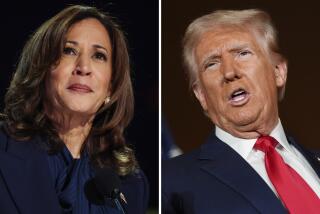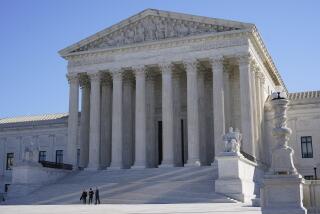New Investor Tax Breaks Expected
- Share via
Battered stock investors may get some relief from the next Congress, including a more generous tax break that could make losses from the current bear market easier to swallow.
Now that the Republicans will control both houses of Congress, analysts expect three “investor-friendly” tax proposals to be debated early next year as part of efforts to stimulate the flagging U.S. economy.
The best odds of success rest with a plan to increase the amount of capital losses that investors can use to shield other income from taxes, analysts say. Raising that limit, which has stayed at $3,000 a year for more than two decades, is seen as having broad appeal to a populace reeling from the deep, 2 1/2-year bear market in stocks.
“It’s reasonable in terms of the revenue drain, and it would be popular not with the super-rich but with average investors,” said Robert Willens, tax and accounting analyst at Lehman Bros. in New York.
Investors say the plan would help heal bear market wounds.
“Certainly it will be welcomed, particularly if they make it applicable” to losses suffered this year, said Jim Peoples, a health-care consultant from Agoura Hills.
Of the two other main proposals related to the market, relief from the so-called double taxation of dividends is seen as a possibility, but reducing capital gains taxes is considered a longshot because it will be perceived as elitist by Democrats, who still will hold enough sway in the Senate to make things difficult for the GOP.
Democrats will push for proposals aimed at lower- and middle-income taxpayers -- perhaps a national monthlong “holiday” from payroll taxes, for instance -- and will strive to tailor legislation toward the working class, said Sung Won Sohn, chief economist at Wells Fargo & Co.
Although some observers say the capital loss limit could be as much as tripled, to $9,000 a year, Sohn called that “wishful thinking on Wall Street.” He called $4,000 to $5,000 more realistic given the effect on the federal budget, already in the red.
The limit applies to any losses left over after realized investment losses are used to offset realized gains from the same year. Under the current limit, a person who had $10,000 in losses and $4,000 in gains from stock sales this year could use the losses to shield the entire $4,000 from capital gains taxes, and use $3,000 of the remaining losses to shield that much regular income from taxes. The remaining $3,000 in losses can be carried forward to offset gains in future years.
The tax on dividend income is often targeted because the money is taxed twice -- once when it is reported as profit by the company paying the dividend and again when it is distributed to shareholders.
Changing the rules on dividend taxation probably would require a compromise that appeals to middle-class Americans, analysts said. One possibility might be to exclude the first several hundred dollars in dividend income from taxation. Another might be to tax the first $5,000 to $10,000 in dividends at the lower capital gains rate and the rest as ordinary income.
Cutting the tax on capital gains, meanwhile, has long been controversial. The tax rate on regular long-term gains is 20%, compared with a top rate on regular income of 38.6%. Though conservatives and “supply-side” economists champion reducing the rate to stimulate investment, the idea still faces an uphill fight.
“It’s the sort of supply-side refrain that is sure to make the Democrats dig in their heels because they see it as mainly benefiting the elite,” Willens said.
The tax proposals would not affect assets in retirement plans such as 401(k)s and IRAs, the vehicles used by many Americans to invest in the stock market. In the $6-trillion mutual fund industry, for example, 33% of assets are in such tax-advantaged retirement accounts.
Whatever reforms emerge from the next Congress, they are likely to benefit the stock market by making equities more attractive to those who invest through taxable accounts, analysts say. Experts downplayed the possibility that changes such as raising the capital-loss limit could depress the market by encouraging investors to dump depreciated stocks to lock in losses.
More to Read
Inside the business of entertainment
The Wide Shot brings you news, analysis and insights on everything from streaming wars to production — and what it all means for the future.
You may occasionally receive promotional content from the Los Angeles Times.










